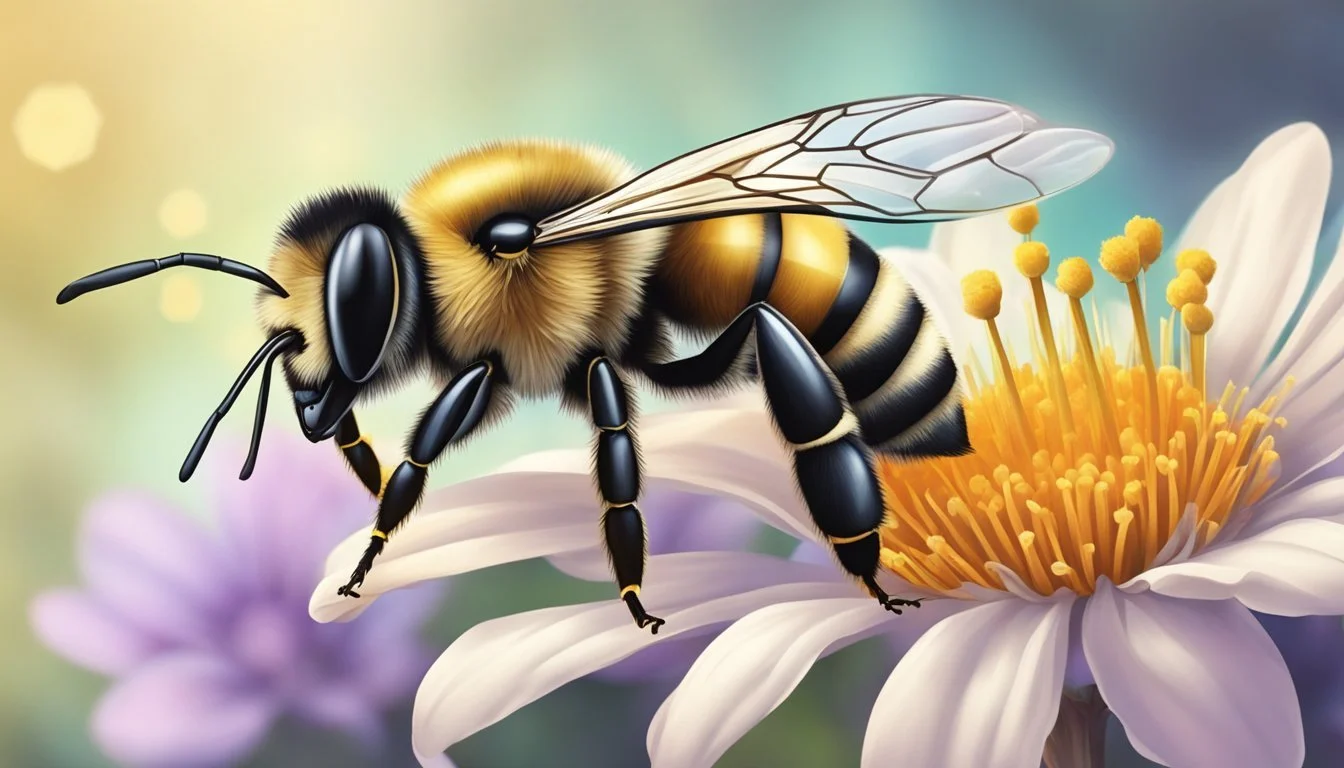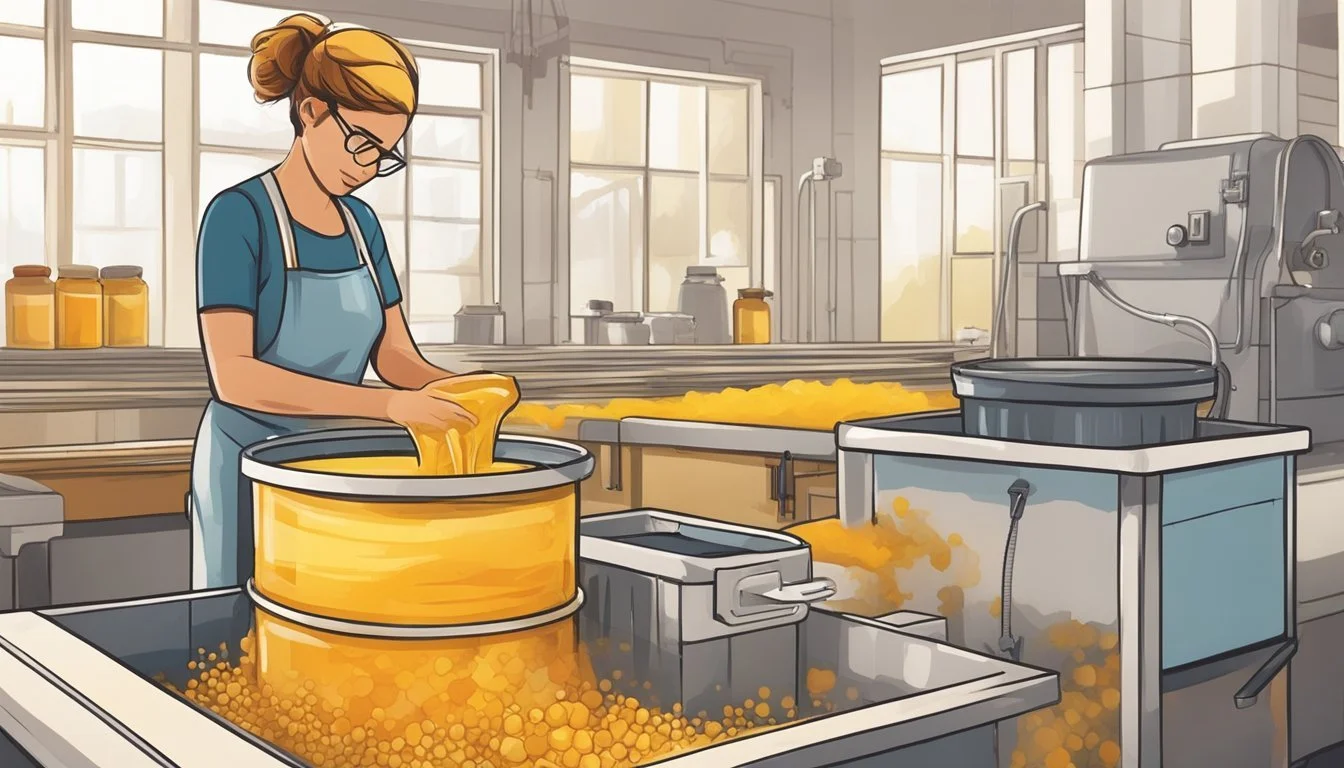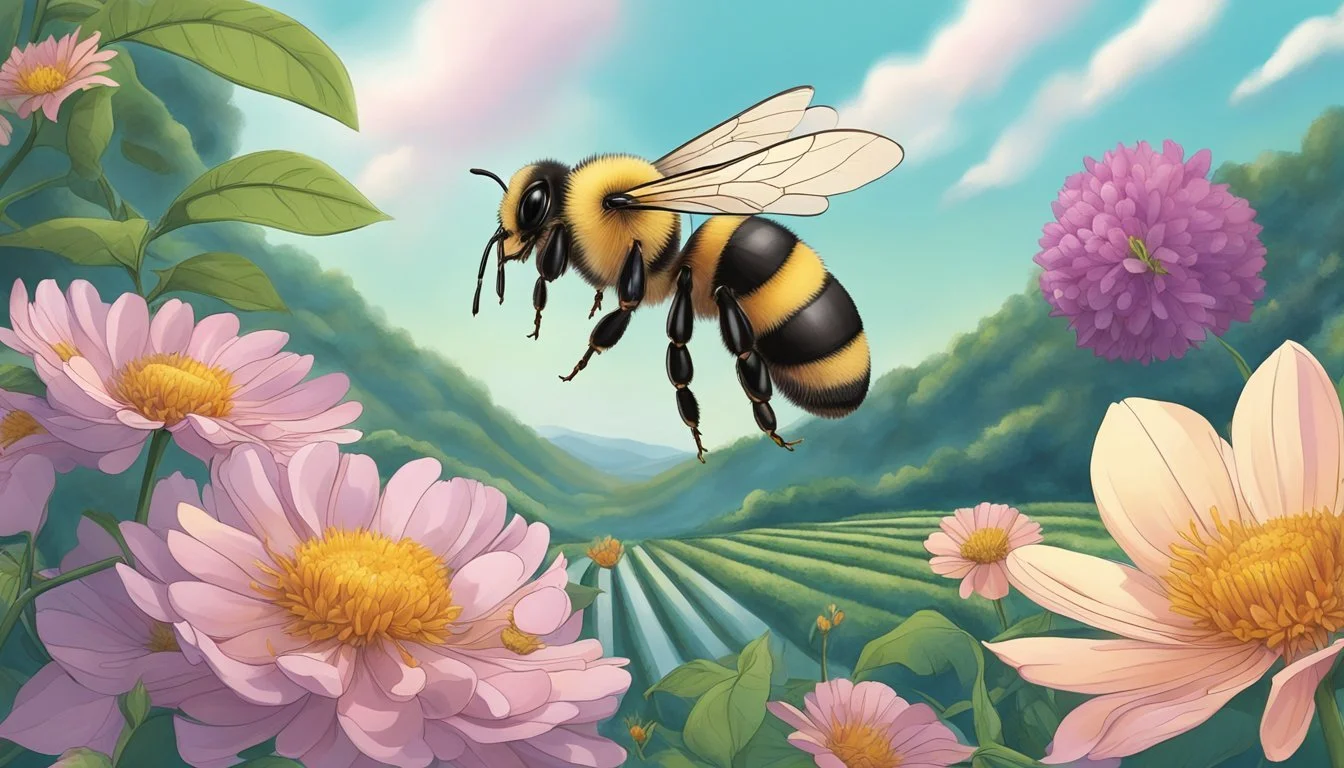The Use of Honey in Sustainable Fashion and Textiles
Exploring Natural Dyes and Finishes
The intersection of sustainable fashion and the innovative use of materials is creating a buzz with the recent exploration of honey (What wine goes well with honey?) and related substances in textiles. The fashion industry is witnessing a transformative era where sustainability is not just a trend but a requisite shift in addressing environmental concerns. Honey, an organic substance produced by bees, has been identified as a component with potential due to its natural properties and the growing interest in biomaterials that do not harm the environment.
Sustainable fashion advocates are finding that materials like honey can provide eco-friendly alternatives to traditional textiles, which often come with a high environmental cost. The production of conventional fashion materials contributes to various ecological issues, including water pollution, chemical use, and greenhouse gas emissions. By turning to honey and other organic, renewable resources, the fashion sector aims to reduce its impact and move towards a more circular economy.
Textile innovation using honey and other natural derivatives promises a future where fashion not only meets aesthetic and functional demands but also aligns with the urgent need for environmental sustainability. This emerging trend is supported by research suggesting that integrating organic materials can decrease the reliance on synthetic fibers, which are commonly derived from fossil fuels, and can lead to a more transparent and responsible fashion industry. The development of textiles enhanced or created using honey is a step toward realizing the Sustainable Development Goals, highlighting the industry’s crucial role in building a more sustainable future.
The Role of Honey in Sustainable Textiles
The use of honey in sustainable fashion introduces innovative avenues for dyeing and finishing processes, providing an eco-friendly alternative to some harsh chemicals commonly used in the textile industry.
Natural Dyeing Processes with Honey
Honey, as a natural substance, is playing a transformative role in the world of sustainable textiles. Its application in natural dyeing processes is notable for its mild nature, acting as a mordant that helps fabric to absorb dyes derived from organic materials. Traditionally, mordants have been metallic salts, which can be toxic and environmentally damaging. In contrast, honey's organic composition makes it suitable for a sustainable approach as it reduces the need for synthetic chemicals. The dyeing process using honey involves:
Preparing the fabric by cleaning it thoroughly to ensure even dye adhesion.
Mixing honey with natural dyes obtained from plants, minerals, or insects.
Applying the honey-dye mixture to the fabric, using techniques that ensure uniform distribution.
Heating the fabric to allow the dye molecules to bind efficiently.
The use of honey in dyeing not only minimizes the environmental impact but also enhances the color richness and fastness of natural dyes on the fabric.
Honey as a Finishing Agent for Fabrics
In the realm of sustainable textiles, honey is also identified as a finishing agent, an application crucial for giving fabrics their final characteristics and appearance. Unlike conventional finishing agents that may contain harmful substances, honey imparts a soft touch and improves the fabric's antibacterial properties. The process includes:
Treating the fabric with a diluted honey solution post-dyeing.
Allowing it to dry, where the honey's natural properties infiltrate the fibers.
This method exemplifies a shift towards sustainable practices by leveraging honey's inherent properties, ensuring the fabrics maintain quality without contributing to further environmental impact.
Benefits of Honey in Textile Manufacturing
Incorporating honey into textile manufacturing processes presents distinct advantages. It contributes to sustainable practices and yields textiles with superior quality characteristics.
Reduced Environmental Pollution
Production Footprint: Traditional textile manufacturing involves chemicals that can cause significant environmental pollution. Honey's natural origin means it avoids the use of these hazardous substances. In the production of fibers, honey can be utilized as a natural mordant or as part of the dyeing process, leading to fewer pollutants in water and soil.
Chemical Reduction: Replacing synthetic agents with honey reduces the chemical load discharged into ecosystems.
Water Use: Honey-based processes often require less water, reducing the strain on this vital resource.
Enhanced Fabric Quality
Softness and Strength: Textiles treated with honey benefit from enhanced softness without compromising on strength. Honey's natural properties can impart a luxurious feel to fabrics, making them more appealing to conscient consumers.
Fabric Durability: Natural antioxidants in honey can potentially extend the lifespan of the fiber, decreasing the need for frequent replacement.
By focusing on these specific attributes, manufacturers can align with sustainable practices while also providing high-quality textiles to the market.
Environmental and Economic Sustainability
In the context of sustainable fashion and textiles, the integration of honey and bee-derived materials presents opportunities for economic and environmental advancements. They offer an innovative approach to reducing ecological footprints and providing economic benefits to communities involved in beekeeping and textile production.
Economic Viability of Honey in Textiles
Honey's role in textiles primarily relates to its use as a natural dye and finish, which promotes sustainable practices. Economic impacts include:
Reduced Costs: Utilization of honey reduces the reliance on synthetic dyes, which can be more expensive to produce and process. This lowers manufacturing expenses.
Support for Beekeepers: The demand for honey and other bee products can economically empower beekeeping communities, aiding in local and regional economic growth.
Environmental Benefits of Using Honey
Integrating honey into the textile industry offers several environmental benefits:
Biodiversity: The practice of beekeeping supports biodiversity, as bees are essential pollinators for many ecosystems.
Sustainable Production: Honey as a natural resource is renewable, reducing the carbon footprint associated with synthetic materials.
Climate Change Mitigation: By promoting ecological balance through the support of bee populations, the practice indirectly helps in climate change mitigation efforts.
Case Studies: Honey in Fashion and Textile Brands
The application of honey in sustainable fashion reflects a growing trend among leading brands to innovate with natural substances. These case studies offer a glimpse into how the fashion industry is leveraging honey's unique properties.
Leading Brands Adopting Honey Applications
Several fashion brands have recognized the potential of honey and beeswax in creating sustainable textile treatments and finishes. For example, BeeCloth has pioneered a line of organic cotton garments treated with a beeswax coating to enhance water resistance, without compromising breathability. This method not only utilizes a natural byproduct but also supports beekeeping communities.
Brand: BeeCloth
Application: Beeswax coating for water resistance
Garment: Organic cotton outerwear
Honeycomb Textiles focuses on integrating honey enzymes in the dyeing process to reduce chemical use and improve color retention. Their commitment to sustainability is evident in their fully traceable supply chain, providing transparency to stakeholders.
Brand: Honeycomb Textiles
Application: Honey enzymes in dyeing
Garment: Naturally dyed fabrics
Impact Assessment of Honey Utilization
The utilization of honey in textiles has measurable impacts on the environment and the fashion industry at large. EcoWear, for example, has documented a significant reduction in water pollution due to decreased reliance on synthetic chemicals in their honey-treated fabrics. They present their findings in an annual sustainability report, reinforcing their dedication to environmental stewardship and transparency.
Brand: EcoWear
Impact: Reduced water pollution
Reporting: Annual sustainability report
Furthermore, a consortium of brands utilizing honey-derived materials has established a joint research initiative to quantify the long-term benefits and challenges of honey applications in the garment sector. They aim to develop a cohesive strategy that guides sustainable practices across the industry.
Consortium: Honey in Fashion Initiative (HIFI)
Purpose: Joint research on honey applications
Goal: Industry-wide sustainable practice guidance
Consumer Awareness and Demand in Sustainable Fashion
In sustainable fashion, consumer awareness and demand are pivotal for the industry's growth. The following subsections explore the education of consumers on the unique benefits of honey as a material and the emerging market trends for textiles derived from honey.
Educating Consumers on Honey Benefits
Consumers may not often associate honey with textiles, but educating them on its unique properties can drive interest in honey-based sustainable fashion. Honey, revered for its antibacterial qualities when consumed, can also impart these benefits to textiles. It adds to fabric sustainability by offering a natural alternative to chemical treatments. Additionally, honey's potential in creating biodegradable fibers aligns well with growing environmental concerns.
Fashion brands are leveraging Instagram and other social media platforms to raise awareness, showcasing how honey is utilized in creating sustainable clothing lines. Interactive content and behind-the-scenes glimpses into the production processes help demystify these innovations for the consumer.
Market Trends for Honey-Based Textiles
The fashion industry is witnessing a tangible shift toward sustainability, reflected in the market trends where honey-based textiles are concerned. Consumers are increasingly vocal about their desire for sustainable fashion, prompting brands to respond.
Consumer Surveys: Recent surveys indicate that a significant portion of consumers now consider the environmental impacts of their fashion choices.
Market Response: In response, there is an uptick in the availability of honey-based textile products, ranging from accessories to apparel.
These market trends suggest a future where honey's role in sustainable textiles is not only acknowledged but also sought after by conscientious consumers. As awareness grows, demand is expected to follow, powering a niche but important segment of the fashion industry dedicated to innovative and sustainable solutions.
Challenges and Opportunities for Honey in Textiles
The integration of honey into sustainable fashion poses distinct challenges yet offers a promising gateway to innovation. This section explores the hurdles impeding its widespread use and the potential it holds for revolutionizing eco-friendly textiles.
Barriers to Widespread Adoption of Honey
One of the main barriers to the widespread adoption of honey in textiles is the complexity of its incorporation into textiles at a scale that is both cost-effective and maintains its beneficial properties. Honey, while natural, is inherently sticky and requires significant processing to be useful in fabric treatments. This processing often necessitates energy and water inputs, which can undermine its sustainability benefits and raise concerns about wastewater production.
Additionally, ethical considerations come into play when scaling up honey use. It must be ensured that the bee populations are not adversely affected, and that practices are in line with social responsibility, particularly with regards to beekeepers and local ecosystems.
Future Prospects of Honey in Sustainable Fashion
Despite these challenges, honey's application in textiles could revolutionize sustainable fashion. Its natural antimicrobial properties could reduce the need for synthetic chemical finishes that typically contribute to environmental pollution. Honey-based finishes could potentially make clothes stay fresh for longer, thus reducing water and energy spent on laundering—advancing the industry's goal of reducing waste.
The potential for recycling honey-derived textiles also provides an exciting area for innovation. If honey can be incorporated into fibers or coatings that do not interfere with the recycle process, the end products could be reclaimed, thus contributing to a more circular economy in the fashion sector.
Moreover, wastewater from the honey treatment processes could be engineered to be reused within agricultural or other industries, thus conserving resources and reducing water waste. The social aspect of utilizing honey centers around the fact that engagement with local communities and beekeepers could stimulate ethical, community-driven supply chains, benefiting both the environment and socioeconomic dynamics.
Regulatory and Ethical Considerations
In the intersection of sustainable fashion and textiles with honey, the industry must navigate complex regulatory landscapes and ethical conundrums. These considerations are paramount to ensuring trust among consumers and partners, and maintaining the integrity of sustainable design initiatives.
Compliance with Environmental Regulations
The textile industry, in its adoption of honey and other natural substances, must adhere to stringent environmental regulations. These laws are in place to ensure that manufacturing processes do not adversely affect ecosystems and that the principles of sustainable design are upheld. Specific regulations might dictate:
The permissible sources of honey to guarantee environmental protection.
The treatment of waste products resulting from honey processing in textiles.
Emission standards for facilities using honey in textile production.
Compliance is not simply a legal mandate but a cornerstone in establishing trust with consumers and partners who prioritize environmental stewardship.
Ethics of Beekeeping for Textile Use
Ethical beekeeping practices are essential when honey is utilized for textile production. The well-being of bee populations and the implications of industrial demand on their habitats must be considered. Ethical considerations include:
Sustainable Harvesting: Ensuring that honey is collected in a manner that does not disrupt bee colonies or their natural foraging patterns.
Bee Population Health: Protecting the health of bees against the threats of over-harvesting and habitat destruction.
Local Communities: Supporting local beekeepers and their communities through fair trade practices.
The ethics of beekeeping for textile use is a critical aspect of sustainable design, aligning the industry's actions with its moral and ecological responsibilities.









